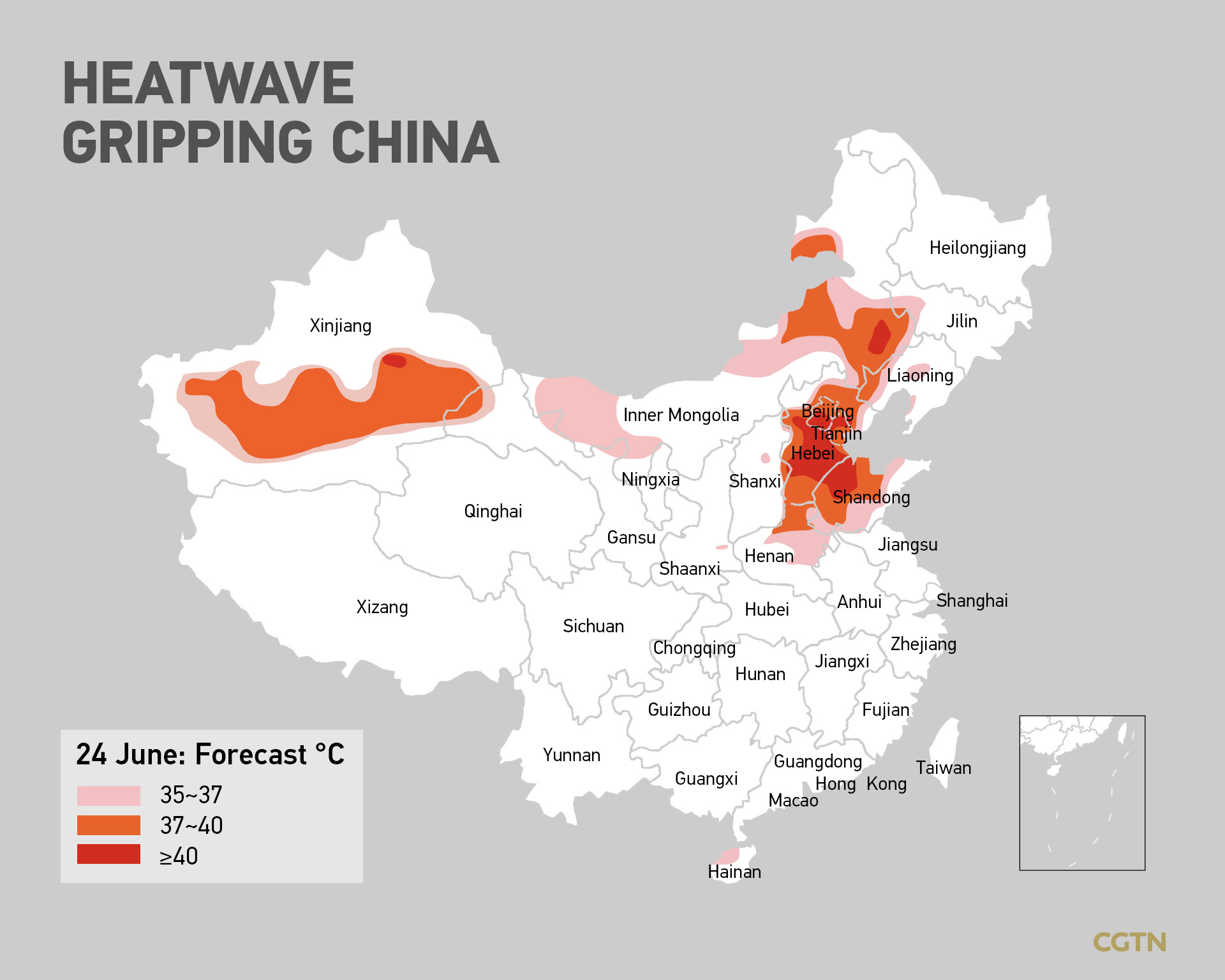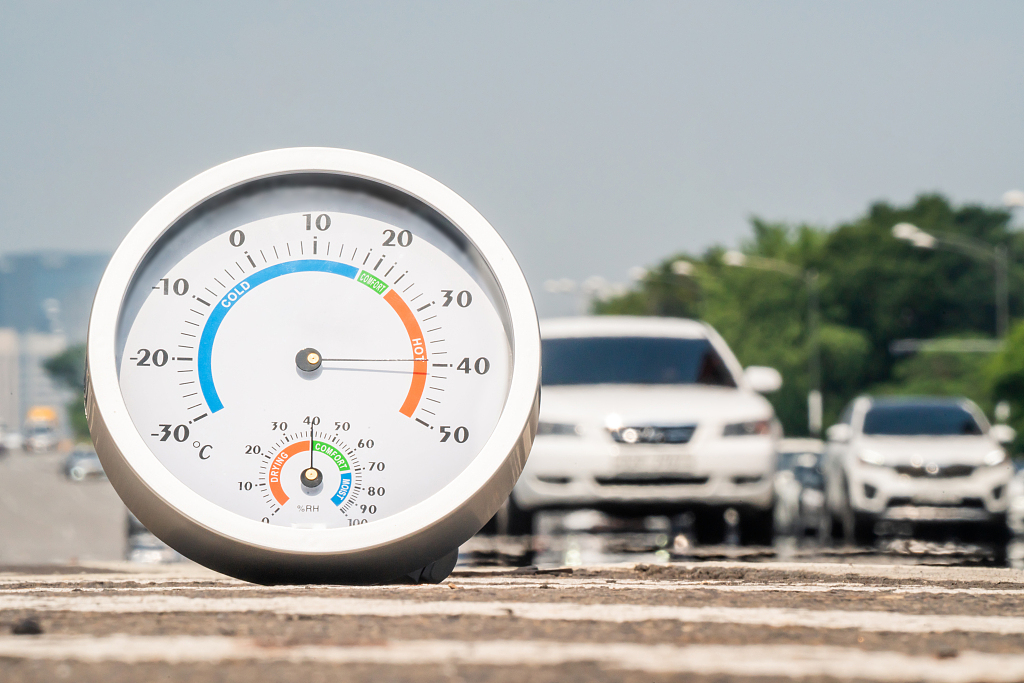00:24

A historic heatwave on Thursday and Friday hit Beijing, pushing temperatures up to around 40 degrees Celsius.
The temperature at a meteorological station in southern Beijing soared to 41.1 degrees Celsius at 15:19 on Thursday, the second-highest reading since reliable records began, according to the Beijing Meteorological Service.
The highest temperature ever recorded at the station was 41.9 degrees Celsius on July 24, 1999. The extreme temperature also shattered the record for the hottest day in June as the previous June high was logged in 1961 when the mercury rose to 40.6 degrees Celsius.
"According to our monitoring, the recent high temperatures that appeared in north China and regions on the Yellow and Huaihe rivers have broken the records of many meteorological observatories. For example, an observatory in Beijing recorded a highest temperature up to 41.1 degrees Celsius on Thursday, higher than any previous records that were logged in June since its establishment. So, generally speaking, the high temperature weather is an extreme case to a certain degree," said Zhang Fanghua, chief forecaster of the National Meteorological Center (NMC).

According to the NMC's forecast, air temperatures in areas including north China and regions on the Yellow and Huaihe rivers are expected to remain high on Friday and Saturday. Observatories in the Beijing-Tianjin-Hebei Region, east China's Shandong Province and central China's Henan Province may see temperatures as high as 35 to 40 degrees Celsius.
The reason for this, Zhang Fanghua explained that since June 21, Beijing, Tianjin and Hebei areas by the warm air mass for a long time, and under the control of the high-pressure ridge situation, radiation to promote warming. In addition, the current long daylight hours, low air humidity and dry weather, also cause temperature to rise.
Zhang Fanghua said that in previous years, in late June, the average maximum temperature is basically equivalent in north and south China. But during this year, according to the record that the maximum temperature in north is higher than the south.
"The main reason is that the south is in a rainy period, subtropical high pressure has not yet controlled the region. In addition, the northern region at this time by the continental high-pressure ridge control, stronger radiation, dry air, so prone to extreme high temperature weather," she added.
Zhang explained that there are obvious geographical differences in the periods of high temperature concentration across China. For northern China, high temperatures are usually more likely to occur from June to early July before the rainy season. As subtropical high and summer winds advance northward, vapor transport and atmospheric humidity increase, resulting in hot and muggy weather. However, it should be noted that body temperature is different from air temperature, it is influenced by humidity, often humid heat type high temperature will aggravate the human body temperature.

The Turpan Basin and the basin areas in the southern part of northwest China's Xinjiang Uygur Autonomous Region and the west and north-central part of north China's Inner Mongolia will bear sweltering heatwaves at 35 to 38 degrees Celsius, with some parts in the Turpan City expected to reach a high of 40 degrees Celsius.
Starting from Sunday, some cities on the Yellow and Huaihe rivers will cool down from the extreme heatwave, and high temperatures will re-occur in more regions in the northeastern part of the country, the NMC said.
The NMC National Climate Center said that as of Thursday, a total of 183 national-level meteorological observatories across the country had seen new monthly maximum temperature records and 46 had seen historical maximum temperature records since June 1.
The number of hot days with the temperatures surpassing 35 degrees Celsius in northern China during this period was 6.4, an increase of 3.1 days compared to the same period of previous years, ranking the fifth in history since 1961. Among many cities lying in the northern part of the country, Beijing ranks the first in terms of the number, following by its neighboring Hebei Province and Tianjin City.
About Climate Archive
Welcome to CGTN Nature's Climate Archive series, the ultimate source for climate science, expert forums, and the latest climate-related info. Together we delve into this handy climate encyclopedia!
For more
Climate Archive: Does climate change affect cherry blossoms?
Climate Archive: What's behind the frequent sandstorms?
Climate Archive: 1.5°C, the critical tipping point
The Climate Archive: Will 2023 be the hottest year on record?
(If you have specific expertise and want to contribute, or if you have a topic of interest that you'd like to share with us, please email us at nature@cgtn.com.)